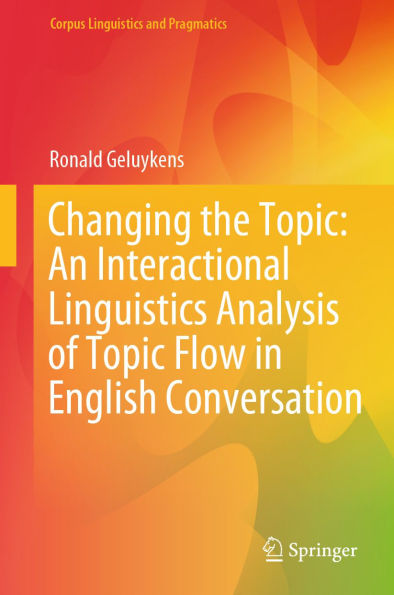This book presents an in-depth analysis of how discourse topics are introduced, maintained, and closed in British English conversation. It highlights the crucial role of real-time negotiation and turn-taking in ensuring cohesive topic flow. Using an inductive, bottom-up approach, the book explores topicality through an operational definition grounded in the traditional Discourse Analysis (DA) concept of given versus new information. This operational framework is used to identify potential topic shifts and is complemented by a detailed micro-analysis of interactional sequences. Inspired by Conversation Analysis (CA), it investigates how topics are negotiated, trouble spots are resolved, and cohesion is collaboratively achieved. The combination of DA and CA methodology, combined with its attention to the linguistic resources employed by participants, explores an exciting new area of Interactional Linguistics. The book offers future avenues for potential contrastive studies on topic flow which take into account regional, social, typological, stylistic, and diachronic variation. It is of interest to researchers working in the fields of information flow, conversational interaction, and functional linguistics in general. Its theoretical apparatus contributes to a clearer understanding of the elusive notion of topicality.
This book presents an in-depth analysis of how discourse topics are introduced, maintained, and closed in British English conversation. It highlights the crucial role of real-time negotiation and turn-taking in ensuring cohesive topic flow. Using an inductive, bottom-up approach, the book explores topicality through an operational definition grounded in the traditional Discourse Analysis (DA) concept of given versus new information. This operational framework is used to identify potential topic shifts and is complemented by a detailed micro-analysis of interactional sequences. Inspired by Conversation Analysis (CA), it investigates how topics are negotiated, trouble spots are resolved, and cohesion is collaboratively achieved. The combination of DA and CA methodology, combined with its attention to the linguistic resources employed by participants, explores an exciting new area of Interactional Linguistics. The book offers future avenues for potential contrastive studies on topic flow which take into account regional, social, typological, stylistic, and diachronic variation. It is of interest to researchers working in the fields of information flow, conversational interaction, and functional linguistics in general. Its theoretical apparatus contributes to a clearer understanding of the elusive notion of topicality.

Changing the Topic: An Interactional Linguistics Analysis of Topic Flow in English Conversation

Changing the Topic: An Interactional Linguistics Analysis of Topic Flow in English Conversation
Related collections and offers

Product Details
| ISBN-13: | 9783031869129 |
|---|---|
| Publisher: | Springer-Verlag New York, LLC |
| Publication date: | 06/09/2025 |
| Series: | Corpus Linguistics and Pragmatics |
| Sold by: | Barnes & Noble |
| Format: | eBook |
| File size: | 561 KB |
